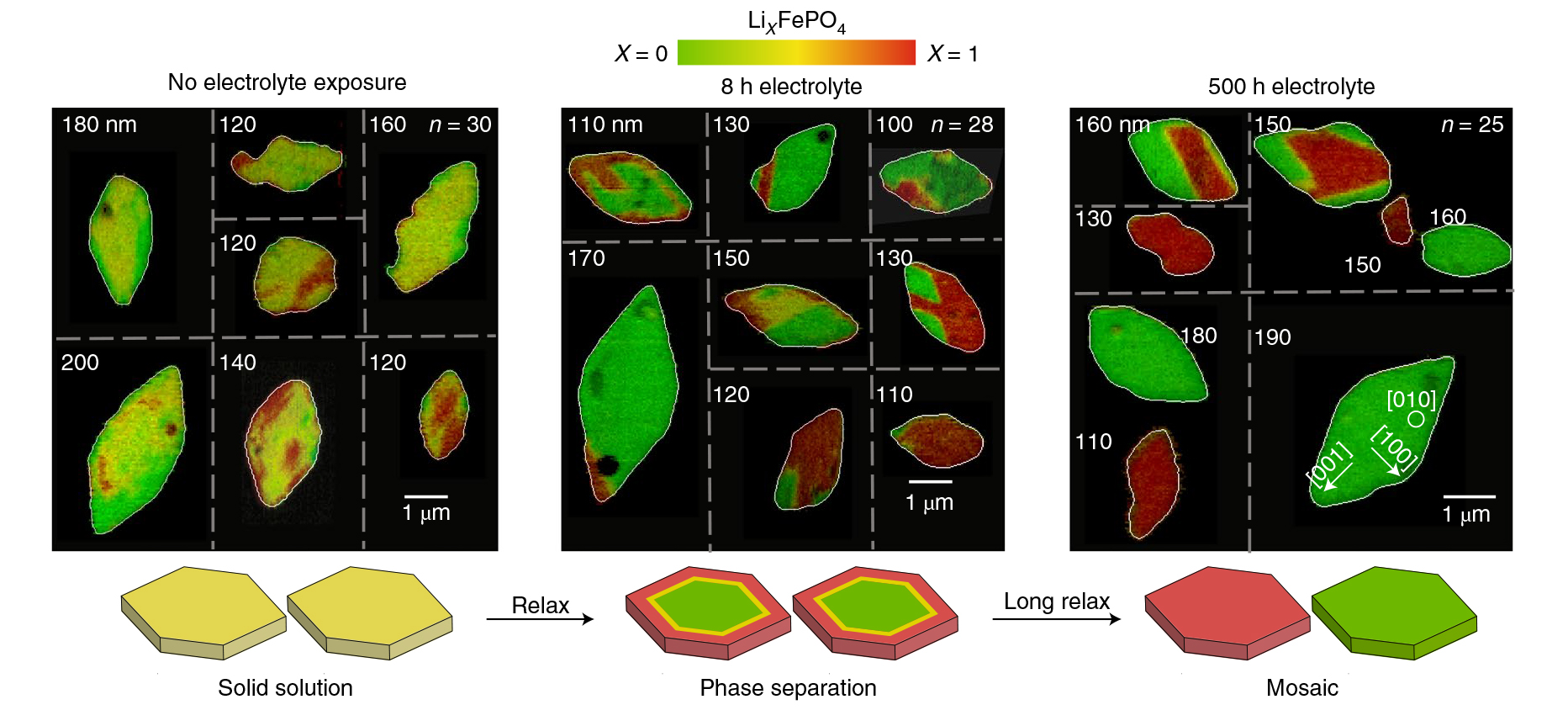When lithium-ion batteries charge and discharge, the lithium ions flow between a liquid solution and a solid reservoir. But once in the solid, the lithium can continue migrating, sometimes causing the material to separate into lithium-rich and lithium-poor phases. The lithium-rich “hot spots” end up shortening the battery lifetime.
To better understand this phenomenon, researchers used two x-ray techniques to study lithium iron phosphate (LixFePO4), a common electrode material. X-ray diffraction, performed at the Stanford Synchrotron Radiation Lightsource (SSRL), revealed the material’s structural changes over time. Scanning transmission x-ray microscopy (STXM), performed at ALS Beamline 5.3.2.2, was used to map changes in the lithium concentration when the material was in contact with air and with a liquid electrolyte.
Previously, researchers thought that lithium ions were only able to travel in one direction, through the bulk of the material. But the data, along with computer simulations, revealed that the ions move in two additional directions on the surface of the material, making LixFePO4 a three-dimensional conductor. The extra pathways are problematic for the material, promoting the behavior that leads to its failure.
The findings create a more complex story that theorists and engineers are going to have to consider in future work. If the lithium can be made to move more slowly on the surface, the lithium distribution will be much more uniform—a key to higher performance and longer-lasting batteries. The results correct more than two decades’ worth of assumptions about the material and will help improve battery design, potentially leading to a new generation of lithium-ion batteries.

Y. Li, H. Chen, K. Lim, H.D. Deng, J. Lim, D. Fraggedakis, P.M. Attia, S.C. Lee, N. Jin, J. Moškon, Z. Guan, W.E. Gent, J. Hong, Y.-S. Yu, M. Gaberšček, M.S. Islam, M.Z. Bazant, and W.C. Chueh, “Fluid-enhanced surface diffusion controls intraparticle phase transformations,” Nat. Mater. 17, 915 (2018), doi:10.1038/s41563-018-0168-4.
Adapted from the SLAC news release, “X-rays uncover a hidden property that leads to failure in a lithium-ion battery material.”